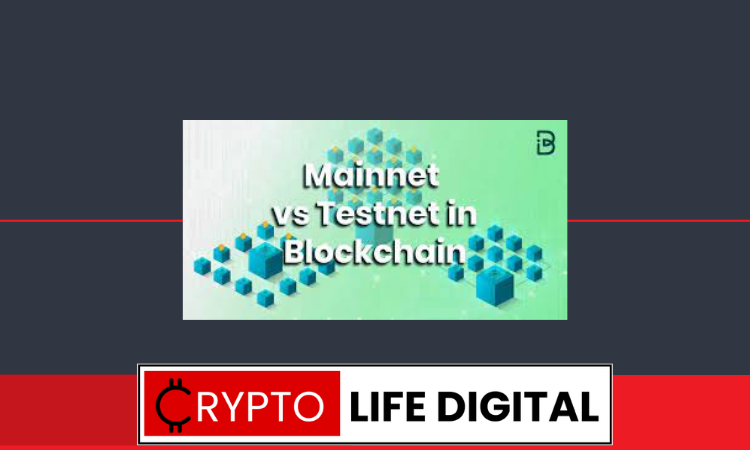What Are The Differences Between Testnets And Mainnets In the Context Of Blockchain

Blockchain technology has been around for over a decade now and has proven to be a reliable and secure way to store and transfer data. From its early days as the underlying technology of Bitcoin, blockchain has evolved to be used in a variety of applications beyond just digital currency. With the rise of decentralized applications (dApps), blockchains have become even more important as they provide the necessary infrastructure for these applications to function. In this article, we will explore the differences between testnets and mainnets in the context of blockchains.
What Is Testnets?
Testnets are essentially test networks for a blockchain. They are used to test the functionality and security of a blockchain before it is deployed to the mainnet. Testnets are similar to the mainnet in many ways, but they have a few key differences. For one, the tokens used on a testnet have no real-world value. This means that you can experiment with the blockchain without worrying about losing any real money. Another difference is that testnets usually have a smaller number of nodes than the mainnet, which makes them easier to manage and test.
What Is Mainnets?
Mainnets, on the other hand, are the production networks that are used by real users. When a blockchain is deployed to the mainnet, it is essentially ready for public use. This means that the tokens used on the mainnet have real-world value and are used for actual transactions. The nodes on the mainnet are also typically distributed across the globe, making it more decentralized and secure.
Benefits of mainnets
One of the biggest benefits of using testnets is that they allow developers to test their applications in a safe and controlled environment. This is particularly important for dApps, as they are often built on top of existing blockchains. By testing their applications on a testnet, developers can ensure that their code is functioning properly before deploying it to the mainnet. This can save a lot of time and resources in the long run, as bugs and security issues can be identified and fixed before they become a problem.
Another benefit of using testnets is that they allow for experimentation with new features and upgrades. Since testnets are separate from the mainnet, developers can test out new features without risking the security or stability of the live network. This can be particularly useful for upgrading existing blockchains, as it allows developers to test out new features before rolling them out to the mainnet.
However, it’s important to note that testnets are not without their limitations. While they are useful for testing and experimentation, they don’t always accurately reflect the conditions on the mainnet. For example, the number of nodes on a testnet is usually much smaller than on the mainnet, which can affect the performance and security of the blockchain. Additionally, since the tokens used on a testnet have no real-world value, they may not accurately reflect the behaviour of real users.
Read Also: XRP Becomes The Leading Altcoin In South Korea In Terms Of Popularity
When it comes to deploying a blockchain to the mainnet, there are a few things to consider. One of the most important is security. Since the mainnet is where real transactions occur, the blockchain must be secure and resistant to attacks. This means that it’s important to thoroughly test the blockchain on a testnet before deploying it to the mainnet. Additionally, it’s important to have a strong consensus mechanism in place to ensure that the blockchain remains secure over time.
Mainnets is Scalable
Another consideration when deploying a blockchain to the mainnet is scalability. As more users begin to use the blockchain, it’s important that it can handle the increased load. This means that it’s important to have a robust infrastructure in place that can scale as needed. Additionally, it’s important to consider the cost of transactions on the mainnet, as this can affect the usability of the blockchain.
In conclusion, testnets and mainnets play an important role in the development and deployment of blockchains. Testnets allow for safe experimentation and testing of new features, while mainnets are the production networks used by real users. Deploying a blockchain to the mainnet requires careful consideration of security and scalability, and thorough testing on a testnet is crucial to ensure that the blockchain is ready for public use. With the continued growth of the blockchain ecosystem and the rise of dApps, testnets and mainnets will continue to play an important role in the development and deployment of secure and scalable blockchain solutions.
Follow us on Twitter, Facebook, Telegram, and Google News

Cryptolifedigital is a cryptocurrency blogger and analyst known for providing insightful analysis and commentary on the ever-changing digital currency landscape. With a keen eye for market trends and a deep understanding of blockchain technology, Cryptolifedigital helps readers navigate the complexities of the crypto world, making informed investment decisions. Whether you’re a seasoned investor or just starting out, Cryptolifedigital’s analysis offers valuable insights into the world of cryptocurrency.




